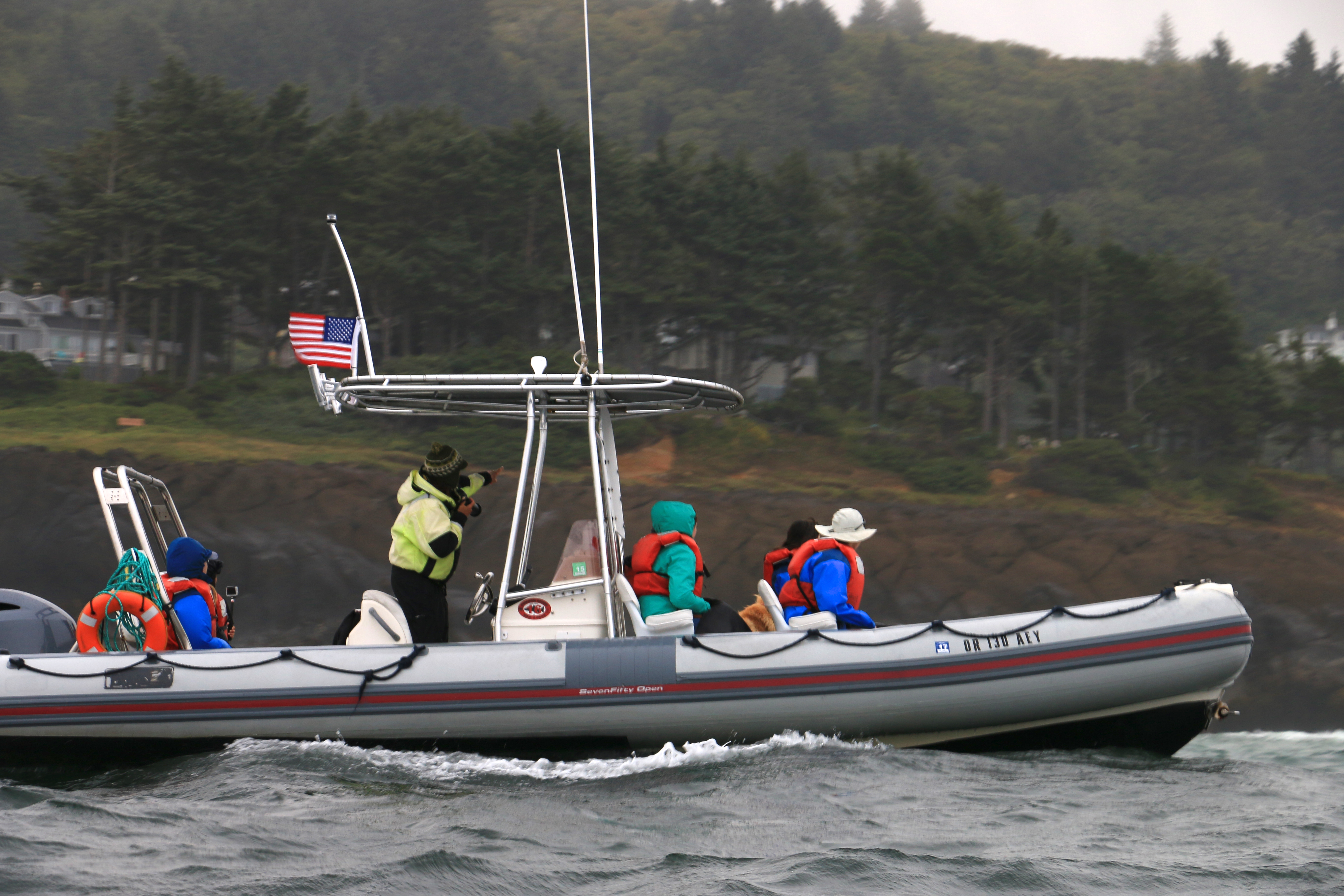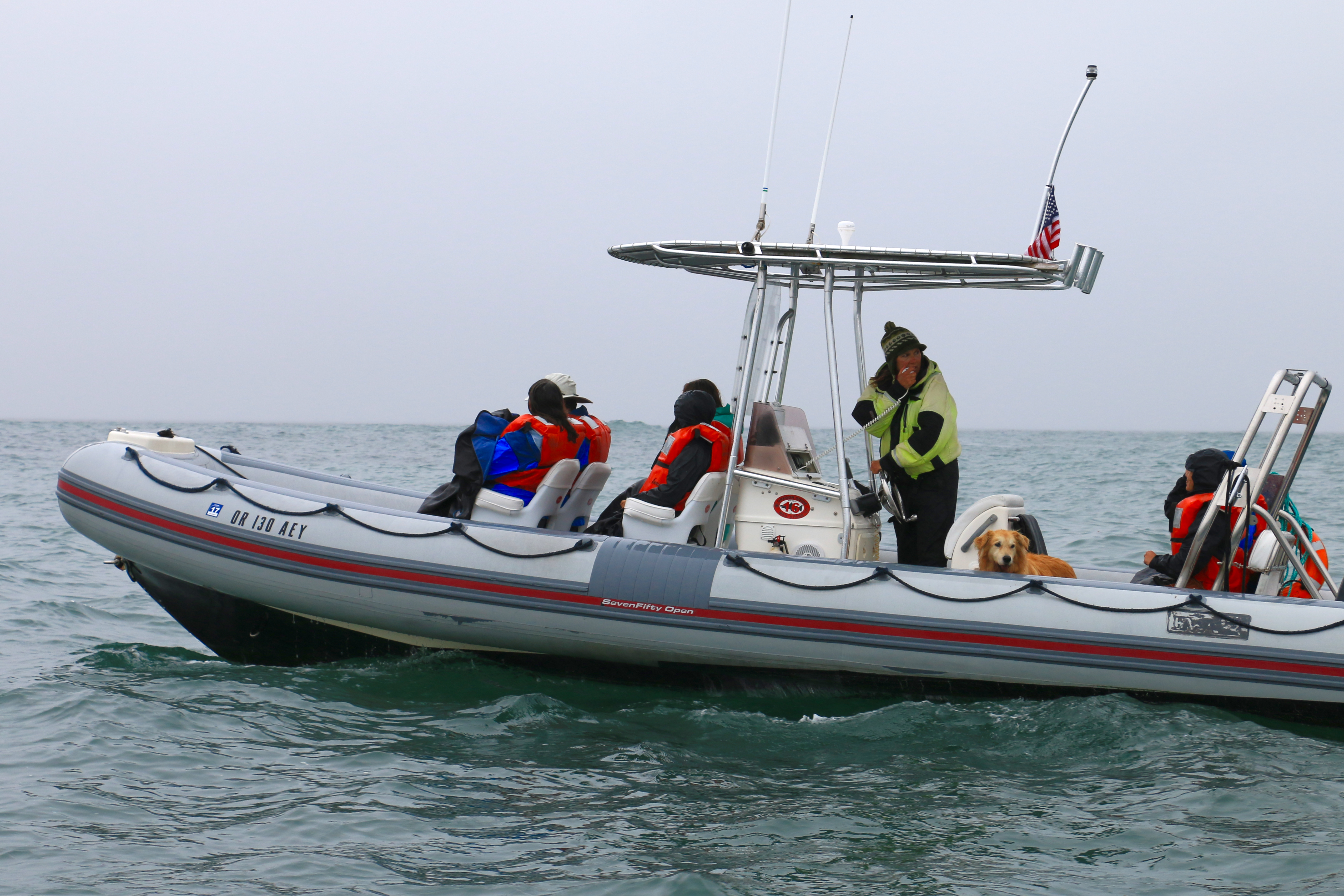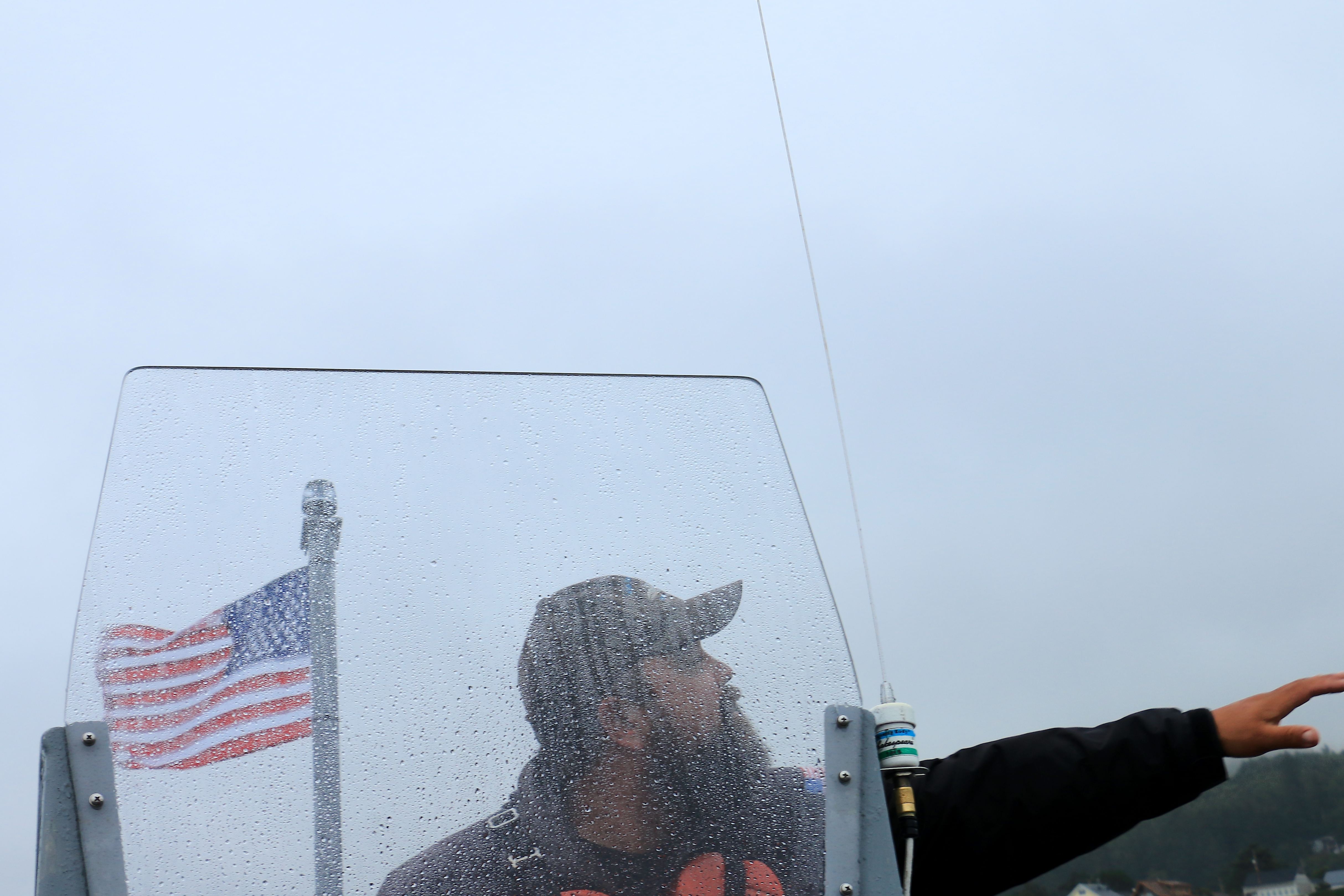Hello Oregon Sea Grant Community!
Before I even get started with my whirlwind update of field work, conferences and dramatic life changes I first want to apologize. It has been far longer than I ever expected since my last post. While I certainly can’t fix my prolonged absence… I can at least begin to explain what’s kept me so far away from my computer since my last post this spring.
First- Conference update!
Thanks in large part to the Malouf Fellowship I was able to attend a marine mammal conference this May in Bellingham, WA. I’m a member of the Society for Marine Mammalogy — but wasn’t able to go to the “big girl” international conference in Dundin New Zealand this past year (as a lowly grad student with teaching responsibilities and a tight budget, well the South Pacific just wasn’t in the cards). What I love about the marine mammal community though, is our ability and desire to collaborate. International conferences are biennial (every two years) but as students we hold an annual chapter meeting. The Northwest Student Chapter for the Society of Marine Mammalogy (NSCSMM- check us out on facebook and get involved!) hosts a one day conference every year at one of the Pacific Northwest Universities. This year Western Washington University had the lucky draw, and the conference organizer was none other than my dear friend and former intern Kat Nikolich. The marine mammal world is quite small.
The conference, which is organized entirely by students, was spectacular. It was a priceless opportunity to hear the latest and greatest in marine mammal research, and entirely from the Pacific Northwest. Further, we had a chance to take a boat ride out of the Western Washington Marine Lab, where we saw heaps of marine life and generally kicked back and got our feet wet. It was also a great place to make some collaborators. At the conference I chatted with a number of students with similar interests in acoustics who I now have plans to work with in the future. (Phew… people say science is competitive, that must be why they created conferences. Working together is always easier than racing to the top). I’m also proud to report that I was elected the new Chapter Representative, and will be working with Pacific Northwest Students for the next few years keeping everyone informed about conferences and opportunities to participate in marine mammal science.
Which leads me to the next exciting conference news. In May, 2015 Oregon State University will be hosting the NWSCSMM Meeting in Newport, OR. We’ll be inviting students from throughout the region (Northern California to Alaska) to present their research (completed or in progress) to friends and colleagues. You don’t need to present to be involved; undergraduates, high schoolers, or graduate students are encouraged to attend. This is an excellent chance for students (or anyone) who wants to learn more about the marine mammal field, or perhaps wants some advice on how to break into marine mammal science, to hobnob with some early career researchers. Feel free to contact me personally if you have questions about attending or presenting, and keep an eye out on this blog and others. I’ll be sure to circulate the details as they unfold.
But I’m not done yet… I know this post is already growing long… hang in there.
Due again in large part to the Malouf Fellowship that I’m so honored to have received, I was able to travel to Washington D.C. (o.k. Leesburg Virginia) this summer for a weeklong Marine BioAcoustics Summer School (SeaBASS). I know not everyone gets excited about spending a week learning about marine physics and underwater sound production, but I do! It was spectacular! I won’t bore you with all of the details here, except to say that fish do vocalize and it’s amazing, and that physics tells us a lot about ocean ecology. You can read a more detailed account of the trip on my lab blog here.
In the interest of brevity just a few more points. I was invited to speak to the American Cetacean Society’s Oregon Chapter this past spring in Newport, OR. I gave a talk on acoustic communication in cetaceans, with an emphasis on critters we have here on the Oregon Coast- which if you didn’t know includes white sided dolphins, Pacific dolphins, harbor porpoise, sperm whales, humpback whales, and gray whales… among others. I’ve also since given two other lectures (one on a small cruise ship and one as a master class at the university) on similar topics. This fall I’ll be teaching two master classes, both of them for universities on the east coast, with a little help from the internet :)
Lastly, I want to pass along some exciting, but bittersweet news. My PhD project has changed. I know. It’s a little strange for me. When I started my PhD I began working on what I believed (and continue to believe) is an extremely valuable marine mammal monitoring project here on the Oregon Coast. Over the part year I’ve been able to recruit a series of talented and committed students and volunteers to act as marine mammal observers looking for whales, dolphin, and porpoise from the R/V Elakha. In my previous posts I told you a little about what we’d been seeing on the water, and this spring we deployed our first round of hydrophones and started listening as well- very exciting.
But, somewhere along the lines something happened. My phone rang. Funding had come available studying the impact of noise on humpback whales in Glacier Bay National Park, and the Park biologist wanted to know if I was able to shift my dissertation focus to Alaska. Prior to working on cetaceans here in Oregon I lived and studied humpback whales in Southeast Alaska. After completing my M.S.at OSU my focus shifted locally to the Oregon Coast, but as you may know funding in science is incredibly tight. When the opportunity for a fully funded PhD position arose, I wasn’t really in a position to say no. Given my background in humpback whale acoustics I was a good fit for the project, and although the decision was a tough one (tougher than you might imagine) I opted to accept the offer.
The flip side of the coin? The good news is that I’ve still been working on the Oregon Coast project, and it’s flourishing. We have a new graduate student in our lab named Courtney Holdman who started as one of our volunteers on the project. She has since taken over the project for her master’s thesis. Our volunteers are still going strong, and the program has expanded somewhat. Two students initially slated to collect data for our marine mammal project are headed out on a 4 day research cruise this September. Three other students from here in Oregon will be headed into the field with me in Glacier Bay next summer. So while I’ll be looking at noise impacts up north, I’ll be bringing a little bit of Oregon with me.
I know this has been quite the earful (eyeful?). Thanks for hanging in there with me on my PhD adventure. It’s been exciting, and I never would have managed it without Oregon Sea Grant (I mean that). I’ll be sure to stay in touch as things unfold! ~Michelle



